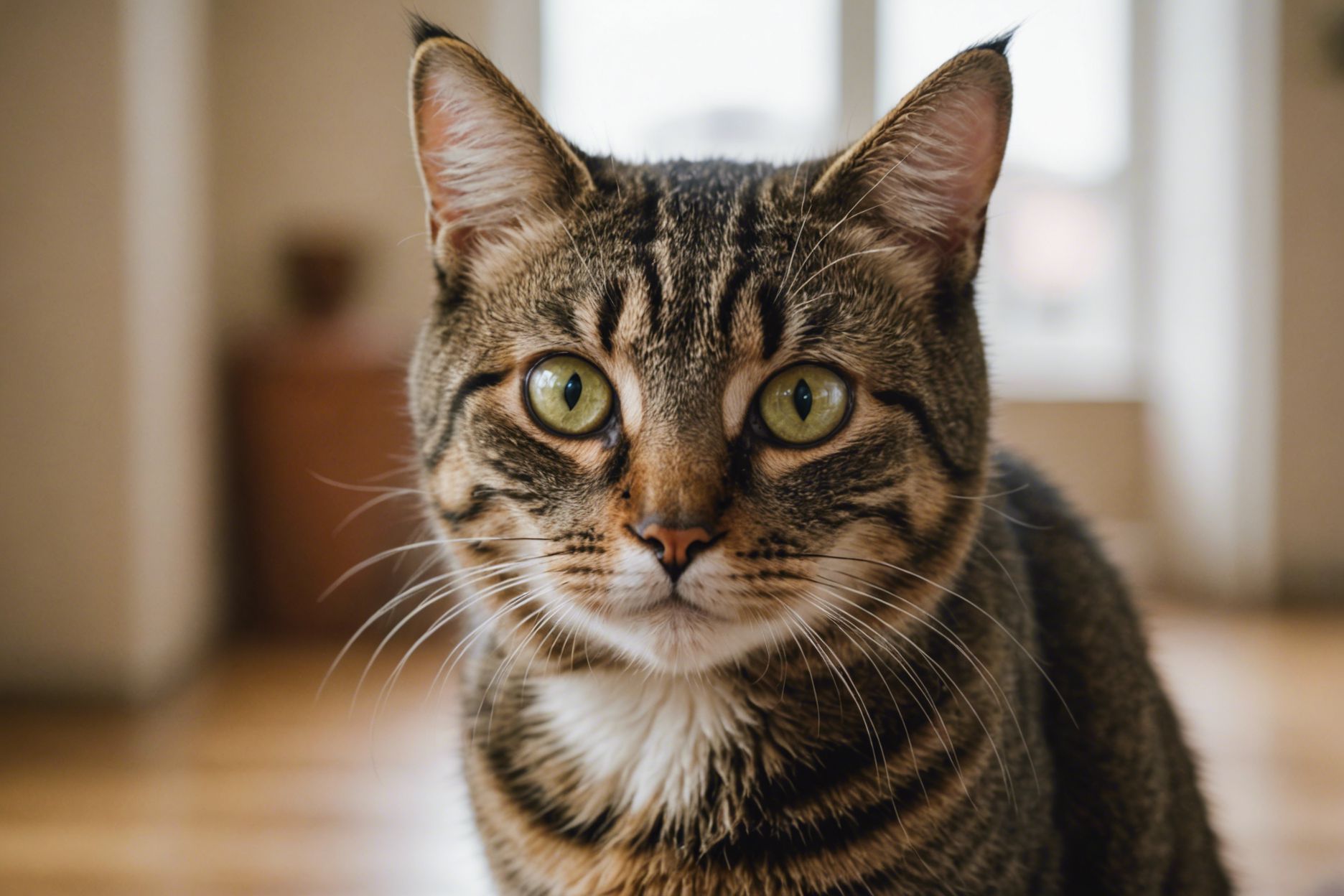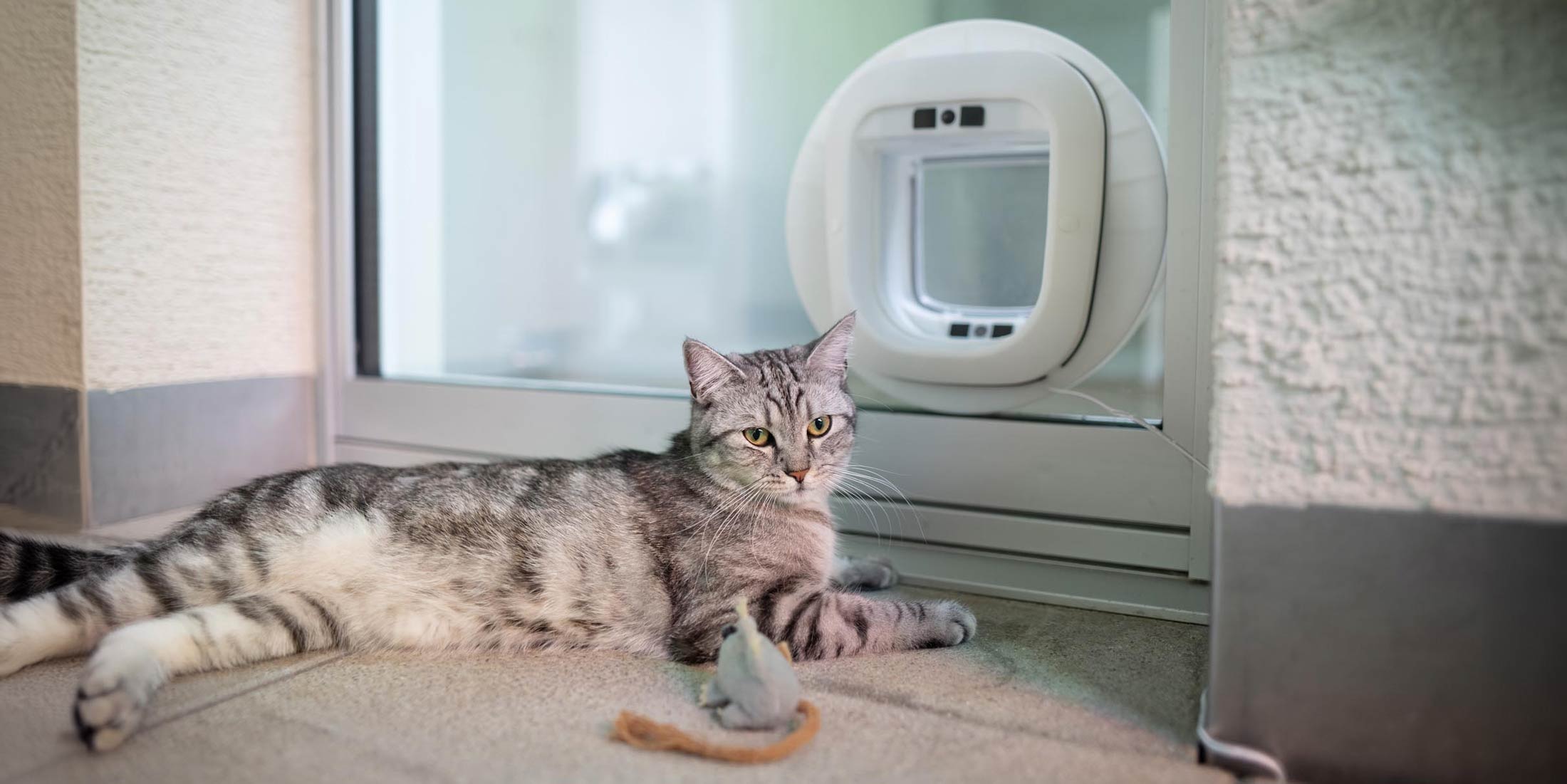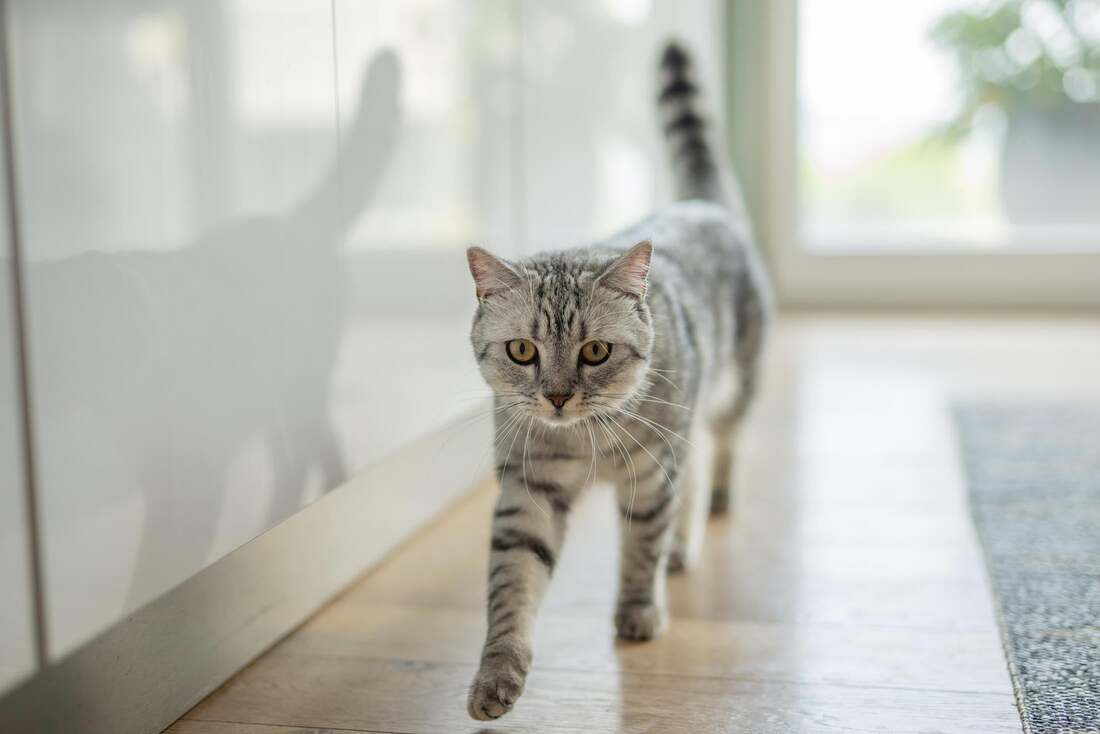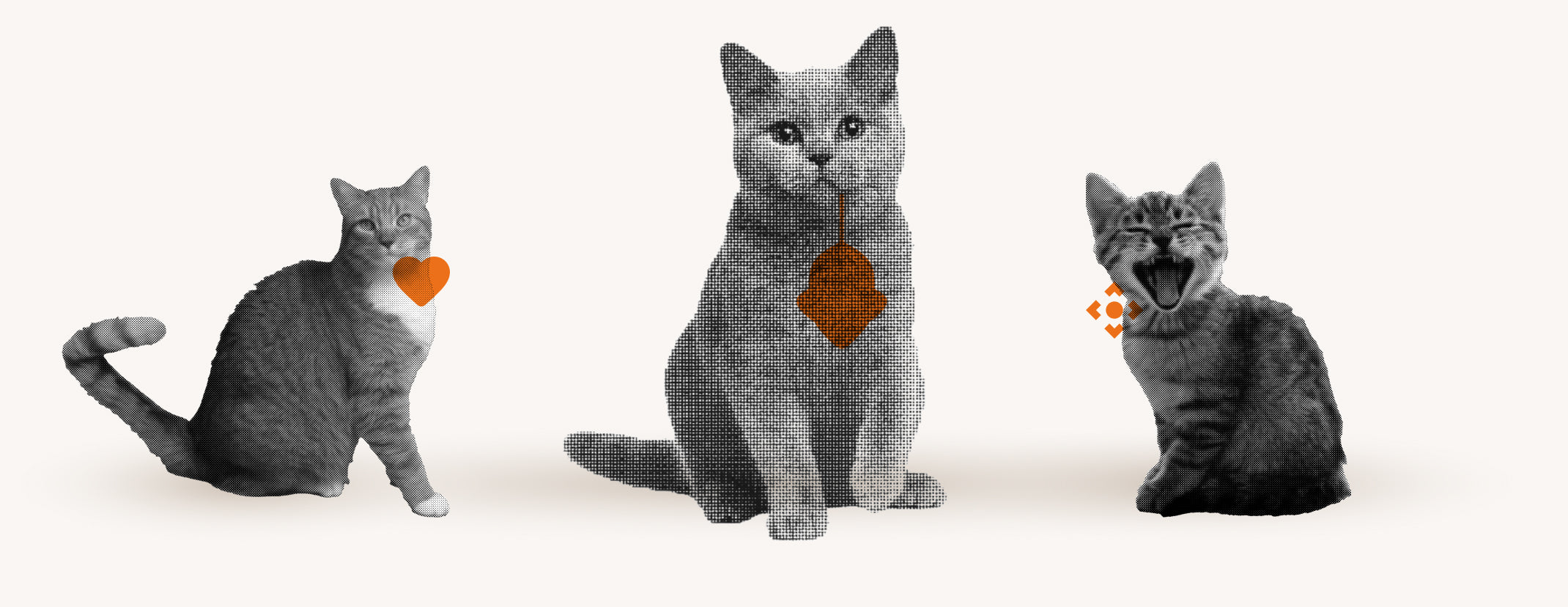Every cat owner knows the worry when their beloved pet suddenly behaves differently or shows signs of illness.
But how can you be sure that it is a serious illness and what are the typical symptoms?
In this guide, you'll learn all about the most common symptoms of cat illness, from behavioral changes to physical signs.
We give you a detailed overview of various cat diseases, how to recognize them, what you can do to prevent them and how you should act in case of illness to help your house cat.
Typical symptoms of diseases in cats
Cats are masters at hiding their pain or discomfort. This often makes it difficult for cat owners to recognize early on when something is wrong with their animal companion. Typical symptoms of illness in cats can be both physical and behavioral. Physical signs include weight loss, vomiting, diarrhea, shaggy fur , and discharge from the eyes or nose . These symptoms can indicate a variety of illnesses, from harmless digestive disorders to serious infectious diseases.
In addition to the physical symptoms, it is often the behavioral changes that cat owners notice first. A cat that suddenly avoids its food, appears lethargic or behaves aggressively could be suffering from an illness. Likewise, a reduced grooming instinct or excessive thirst can indicate health problems. It is important to take such signs seriously and consult a veterinarian if in doubt. Early detection and timely treatment can be crucial to ensure the health and well-being of your cat.
Behavioral Changes in Sick Cats
Behavioral changes in cats can be subtle, but they are often the first clues that something is wrong with your pet. Lethargy, apathy , or withdrawal from usual activities can be signs of illness. Likewise, a change from calm to aggressive behavior can indicate pain or discomfort. It is important to observe and evaluate such changes in your cat's behavior, as they could be the key to early detection of illness.
How to tell if a cat is sick
To recognize that a cat is sick, you should look for a combination of physical symptoms and behavioral changes. Abnormalities such as changes in eating behavior, vomiting, diarrhea or shaggy fur can indicate health problems. Behavioral changes such as increased withdrawal, lethargy or aggressiveness are also important indicators. It is important that you do not hesitate to see a vet if you suspect an illness. Early diagnosis and treatment can be crucial for your cat's health.
Various diseases in cats
Cats are not only fascinating and loving pets, but unfortunately they are also susceptible to a number of diseases. These can range from minor ailments that can be treated with simple measures at home to serious illnesses that require extensive medical treatment. The range of diseases that can affect cats is large and includes both infectious and non-infectious causes. It is important for cat owners to be informed about the various diseases and their symptoms in order to be able to act quickly if necessary.
Early detection and treatment of disease can be crucial to a cat's health and well-being. Regular visits to the vet , a balanced diet and vaccinations are important measures to prevent disease. In addition, cat owners should pay attention to changes in their pets' behavior, as these can often be the first signs of illness. By understanding the different diseases and their signs, cat owners can help minimize the risk of serious health problems and improve their cats' quality of life.
Common Diseases in Cats
Among the most common diseases in cats are parasites such as fleas, ticks and worms, which are not only unpleasant for the cat, but can also lead to other health problems. Ectoparasites such as fleas can cause skin irritations and allergic reactions, while worms can affect the cat's digestive tract. It is therefore important to establish regular parasite protection as part of health care.
In addition to parasitic infestation, diseases such as diabetes and chronic renal insufficiency are also among the most common problems in cats. These diseases can be caused by various factors such as obesity or genetic predisposition. Symptoms can include increased thirst, weight loss or behavioral changes. Early detection and appropriate treatment are crucial to maintaining the cat's quality of life.
Particularly dangerous diseases for cats
One of the most dangerous diseases for cats is Feline Infectious Peritonitis (FIP) , a disease caused by the feline coronavirus that is often fatal. Equally dangerous can be the Feline Leukemia Virus (FeLV) , which weakens the immune system and makes the cat susceptible to further infections. These diseases can spread through contact with infected cats or their excrement and require immediate veterinary care.
Feline distemper, also known as feline panleukopenia, is another serious threat to cats, especially kittens and young cats. It is caused by the parvovirus and results in symptoms such as fever, vomiting and severe diarrhea. The best prevention against such dangerous diseases is early vaccination and following the vaccination schedule recommended by the veterinarian. Good hygiene and avoiding contact with infected animals are also important protective measures.
Infectious Diseases in Cats
Contagious diseases such as cat flu and feline distemper not only pose a risk to the affected cat, but can also be quickly transmitted to other cats. Transmission usually occurs directly through contact with infected animals or indirectly via contaminated objects. Caution is therefore particularly important in households with multiple cats or for cats that go outside. Regular vaccinations and hygiene measures are crucial to prevent the spread of such diseases.
In addition to viral and bacterial infections, parasites such as fleas and ticks can also transmit diseases between cats. Effective parasite protection is therefore important not only for the health of the individual cat, but also to protect other cats. Cat owners should also ensure that their animals do not have contact with sick or unknown cats and have regular health checks carried out by the vet in order to detect and treat contagious diseases at an early stage.
diseases that are transmissible to humans
In addition to the diseases that specifically affect cats, there are also those that can be transmitted from cats to humans . These diseases, known as zoonoses, can be transmitted through direct contact with the animal, its excrement or even through parasites that pass from the cat to humans. One of the best known examples is rabies , a serious viral disease that can lead to serious neurological problems. To protect yourself and your family, simple precautions are essential:
- Regular hand washing after contact with cats or their environment,
- avoiding raw meat as cat food to minimize the risk of transmission of pathogens,
- and carrying out regular health checks and vaccinations on the cat to prevent transmission of diseases such as rabies. By following these measures, the risk of transmission of human-transmitted diseases can be significantly reduced, thus protecting both the health of the cat and that of the human family members.
Prevention of diseases in cats
Preventing disease in cats is a crucial step to ensure your cat lives a long and healthy life. One of the most important preventative measures is vaccination. Vaccinations protect your cat from a number of dangerous diseases, such as feline distemper and cat flu. It is important to speak to your vet to create a personalized vaccination plan for your cat based on their age, health status and lifestyle. In addition to vaccinations, it is also important to have regular health checks at the vet. These checks can help identify and treat potential health problems early, before they become more serious.
In addition to vaccinations and regular health checks, there are other measures you can take to promote your cat's health:
- Protection against parasites : Make sure your cat is regularly treated for fleas, ticks and worms. These parasites can not only be uncomfortable for your cat, but can also transmit various diseases.
- Balanced diet : A healthy and balanced diet is crucial for your cat's overall health. Make sure your cat's food contains all the necessary nutrients it needs for a healthy life.
- Exercise and play : Regular exercise and playtime will help keep your cat fit and prevent obesity, which can lead to a number of health problems. By combining these measures, you can go a long way in preventing disease in your cat and ensuring that he or she lives a happy and healthy life.
What to do if the cat is sick
If you notice your cat is ill, the first and most important step is to stay calm and assess the situation . Observe your cat closely and note any symptoms you notice. This can range from obvious signs like vomiting or diarrhea to more subtle clues like behavioral changes or loss of appetite. It's important that you gather this information before picking up the phone to contact a vet. Being a well-informed cat owner means you can give your vet a clear and detailed description of your cat's condition, which can speed up diagnosis and initiation of appropriate treatment.
Once you have a list of symptoms, contact your veterinarian . Depending on the severity of the symptoms and your veterinarian's advice, you can decide if an immediate visit is necessary or if you can take certain measures at home. Here are some points to consider:
- Make note of any symptoms and behavioral changes before calling your veterinarian.
- Be prepared to answer questions such as when symptoms began and whether your cat has had access to potentially dangerous substances.
- Follow your veterinarian's instructions carefully, whether it involves administering medication or specific care instructions.
- Keep your cat comfortable and calm to avoid additional stress. This is especially important because stress can slow the recovery process. By working closely with your veterinarian and carefully monitoring your cat, you can help him recover more quickly and return to full health.
How Flappie can reduce the risk of disease
One of the most effective ways to reduce the risk of disease in your cat is prevention. That's where Flappie comes in, a smart cat flap specifically designed to prevent cats from coming home with prey. This is especially important because many prey animals can carry pathogens that can be dangerous to cats. The Flappie cat flap uses advanced camera and AI technology to detect if your cat is trying to come home with a prey animal. If so, the flap will stay closed, preventing potential pathogens from entering your home. This innovative technology offers several benefits:
- Selective access control prevents cats from entering the house with prey.
- Prey detection through camera and AI technology reliably identifies prey.
- The Flappie app lets you receive notifications and remotely control the cat flap, giving you full control.
By installing Flappie in your home, you will not only help reduce the risk of disease, but also ensure a clean and prey-free home. The Flappie app also gives you the ability to adjust settings, set access times for your cat, and view exciting statistics and behavioral patterns of your cat. This all leads to a better understanding of your cat's behavior and allows you to take proactive measures to protect their health. It's time to take proactive steps to keep your cat and your home safe . Download the Flappie app and install the smart cat flap to effectively reduce the risk of disease while giving your cat the freedom they love without bringing in unwanted guests.
Frequently Asked Questions
How do cats behave when they are not feeling well?
When cats are not feeling well, they often show behavioral changes. They may appear lethargic, withdraw from their usual activities or even display aggressive behavior. Likewise, a reduced grooming instinct or excessive thirst can indicate health problems. It is important to take such signs seriously and, if in doubt, consult a veterinarian.
What are the most common cat diseases?
Common diseases in cats include parasitic infestations such as fleas, ticks and worms, diabetes and chronic renal failure. These diseases can be caused by various factors such as obesity or genetic predisposition and show symptoms such as increased thirst, weight loss or behavioral changes.





Share:
FIP in cats: symptoms, course and treatment
End-stage renal failure in cats: what to do